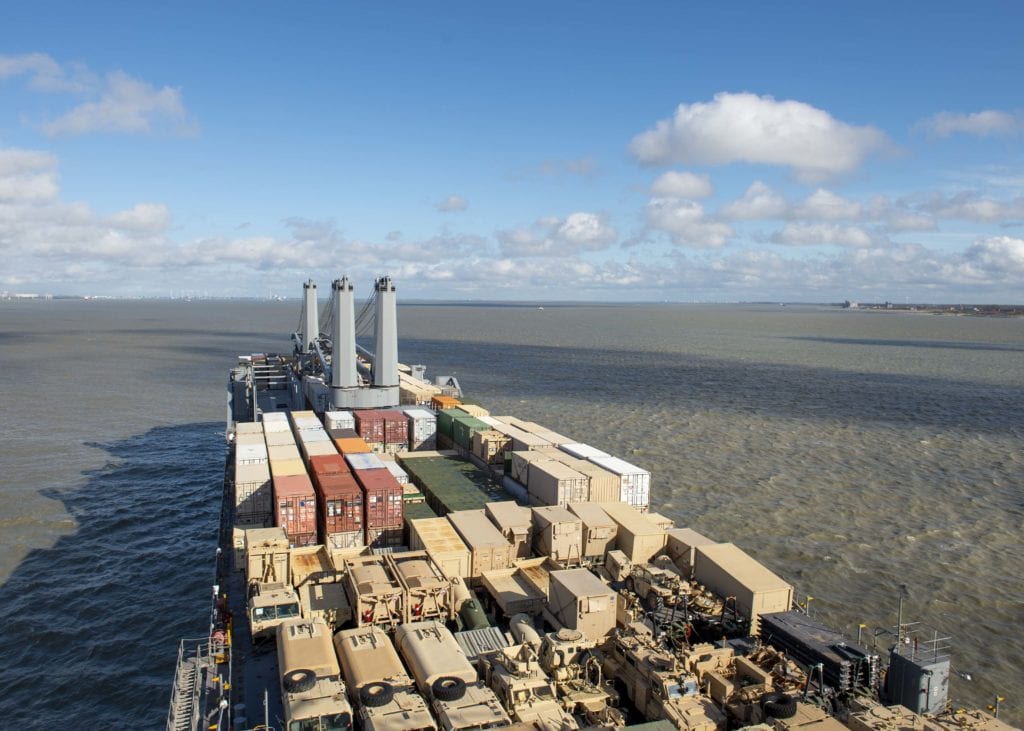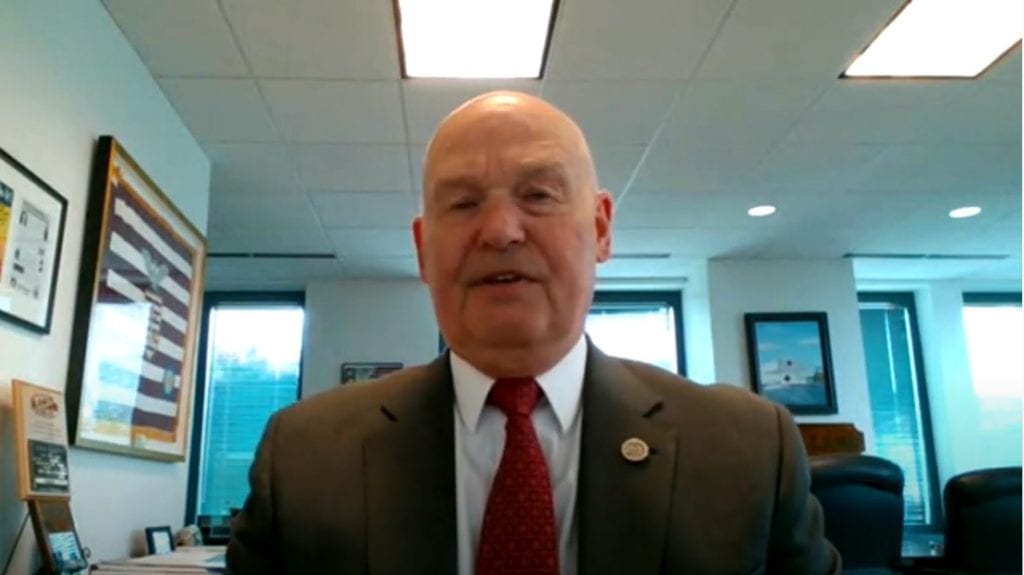
ARLINGTON, Va. — U.S. strategic sealift fleets need recapitalization and some increased manning to achieve the readiness that the nation needs to sustain its maritime power, the U.S. maritime administrator said April 14.
“The readiness is suffering,” a fact that sealift stakeholders recognize, Maritime Administrator Mark H. Buzby said during a webcast that is part of the Navy League’s Sea-Air-Space 2020: Virtual Edition.
To register and then watch this Sea-Air-Space 2020: Virtual Edition webinar live online, click here.
Buzby pointed out that rusting ships, obsolete equipment, unavailable parts and repairing and replacing ships are the materiel challenges faced by the Maritime Administration (MARAD) and the U.S. Navy’s Military Sealift Command (MSC).
MARAD’s Ready Reserve Force of 46 ships and MSC’s 15 sealift ships all need recapitalization, Buzby added.
He said the federal government is taking three approaches to recapitalizing the fleets and that a combination of those “will help us renew the fleet”:
- Extending the service lives of some existing ships to possibly 60 years.
- Replacing 25 to 26 ships with new or converted used vessels.
- Procuring built-for-purpose sealift ships “from the keel up.”
Recruiting and retaining enough mariners remains a challenge as well, Buzby said. Commercial mariners in the U.S. Merchant Marine — including those in the Ready Reserve Force, on Maritime Security Program ships available for mobilization and the declining U.S.-flag merchant fleet — and the government’s civilian mariners who work for the MSC are part of the pool that man the sealift ships.

He said that 24 ships in the Ready Reserve Force are steam-powered, operated by a shrinking pool of technicians qualified to operate and maintain the obsolete propulsion system.
Buzby said the mariner pool is “enough for a steady state today” but inadequate for a substantial mobilization requirement.
Of help would be to place more merchant ships “under the U.S. flag so it gets the pool … where it needs to be,” he added.
Building up the U.S.-flag merchant fleet is a considerable challenge, he said, because competitors such as China that have state-run enterprises can undercut the U.S. in terms of lower-cost shipbuilding and manning and can therefore compete more effectively for cargo business.
“We’re asking our merchant marine to play on an unlevel playing field,” he said.
- SECNAV Advocates Increased Legal Immigration to Increase Shipbuilder Workforce - April 23, 2024
- Insitu Going Strong at 30, Focusing on Maritime Operations - April 8, 2024
- Navy Awards Boeing Additional Funds for MQ-25 Drones for Testing - April 3, 2024






